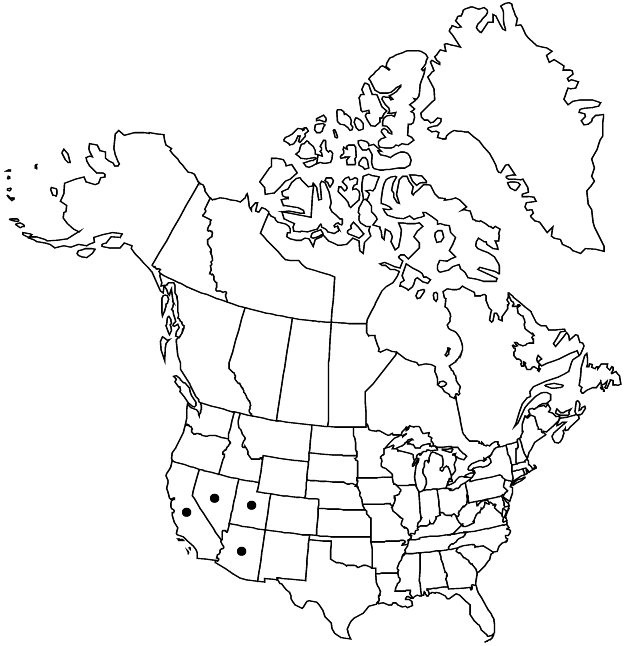Oxytheca perfoliata
Proc. Amer. Acad. Arts 8: 191. 1870.
Plants spreading, 0.6–2 × 0.5–4 dm. Stems glandular distally. Leaf-blades spatulate to oblong or oblanceolate, 1–6 × 0.3–1.5 cm, margins ciliate, otherwise glabrous. Inflorescences open to densely branched, 0.8–1.7 dm; bracts at first node 4–5, triangular to lanceolate, 2–10 × 0.5–4 (–8) mm, with awn 0.5–1 mm, sparsely glandular, bracts at remaining nodes 3, forming an orbiculate to somewhat triangular perfoliate disk mostly 1–2.5 cm across, glabrous or glandular, with awn 1–3 mm, terminal bracts 0.5–2 × 0.1–0.4 mm, sometimes merely acerose, with awn 0.5–2 mm. Peduncles erect, stout, 0.3–0.8 mm at proximal nodes, sometimes absent. Involucres 2–5 mm, glabrous or sparsely glandular abaxially; teeth 4; awns reddish, 2–3 mm. Flowers 5–10; perianth white or yellowish green to pink, 1.5–2.5 mm, echinulate and sparsely glandular abaxially; tepals monomorphic, lanceolate to ovate; filaments 1–1.5 mm, papillate basally; anthers pink to red, oval, 0.2–0.5 mm. Achenes dark-brown to maroon, 1.5–2 mm. 2n = 40.
Phenology: Flowering Apr–Aug.
Habitat: Sandy to rocky flats, washes, and slopes mainly in saltbush communities
Elevation: 600-1900 m
Distribution

Ariz., Calif., Nev., Utah.
Discussion
Oxytheca perfoliata is basically a plant of the Mojave Desert, with extensions along the Lahontan Trough into northwestern Nevada (to Humboldt and Washoe counties), and along the desert edge of California’s Transverse Ranges and the more arid portions of the San Joaquin Valley. It also occurs in the Sonoran Desert south to Imperial County, California.
Oxytheca perfoliata is a food plant for the desert metalmark butterfly (Apodemia mormo deserti).
Selected References
None.
Lower Taxa
"/2" is not declared as a valid unit of measurement for this property."dm" is not declared as a valid unit of measurement for this property."dm" is not declared as a valid unit of measurement for this property.